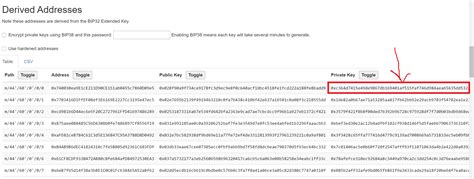Here is the drawing of the article:
Ethereum: Integration of ERC20 approval before the transaction using WAGMI on Frontend
When building decentralized applications (DAPP) to Ethereum blockchain, one ordinary challenge is to support the token transmission between users. One of the key aspects of this procedure is to make sure that the user has approved an intelligent contract before moving his tokens.
In our DAP we use the ERC-20 tokens for various purposes, including payment and storage processing. However, the requirement of users approving an intelligent contract for the transfer of these tokens may be burdensome and may lead to unnecessary delays or errors. It is here that Wagmi-Clean and a simple library that simplifies the interaction with Blockchain Ethereum.
In this article, we will examine how to integrate the approval of ERC20 before the transaction using the weight of our DAPP.
Why Wagmi?
Wagmi is a popular, modern Web3 library that provides a simple and intuitive way of interaction with blockchain Ethereum. Its basic functions include:
* Automatically transfer to tokens
: Wagmi processes the complex logic needed for automatic tokens transfers, which makes it easier to focus on the development of our DAPP.
* Simple API interfaces: Wagmi API has been designed to be easy to use, enabling programmers to use their functions without the need for extensive knowledge about Ethereum programming.
* Mechanisms of service and attempts to make errors

: Wagmi provides a strong mechanism of service and re -take into account to make our application remain stable and effective.
Integration of ERC20 approval with WAGMI
To integrate the approval of the ERC20 before the transaction using the Wagma in the front of our DAP, we will take these steps:
1
- Import Wagmi: We will introduce Wagmi and its addiction to our application:
`Javascript
Import {cinewagmi} with "wagmi";
3
`Javascript
Const provider = {
... uswagmi ({{{
// replace the service provider (e.g. " ')
Network: "ETH",
AND),
};
- Define the token transmission function: now we will define a non -standard function to process the token transfer using WWIM:
`Javascript
Const handletkentransfer = async ({date, params}) => {
// Set the address and amount of the ERC-20 token with parameters
Const tokenaddress = param.toKenaddress;
Const quantity = params.amount;
// Use WagMi to automatically send the token
Return of the service provider.
'move',
{
// Please provide information about the transaction, including the address of the token contract, the sender's address and the address of the portfolio recipient
Inputs: {from: param.fromaddress, to: tokenaddress, quantity},
Iche
);
};
- Call a non -standard function when the user tries to send tokens: we will add checking to make sure that the user has approved the intelligent contract before the transfer of his tokens:
“ Javascript
Const Handletkentrandransferequest = Async (event) => {
// Check if the user has approved an intelligent contract to send the token
Const
Inquiry: {{
Inputs: {{
from add -ons,
Rosedress,
sum,
Network: “ETH”,
Tx: {jsonrpc: ‘2.0’},
Moshlo
Moshlo
});
// If the approval has been approved, continue the transmission of the token using WAGMI
if (result.data.appho) {{
Waiting for handletkentransfeer ({date: result. Date, params: event});
} Otherwise {
// process the case in which the user has not approved an intelligent contract
console.
